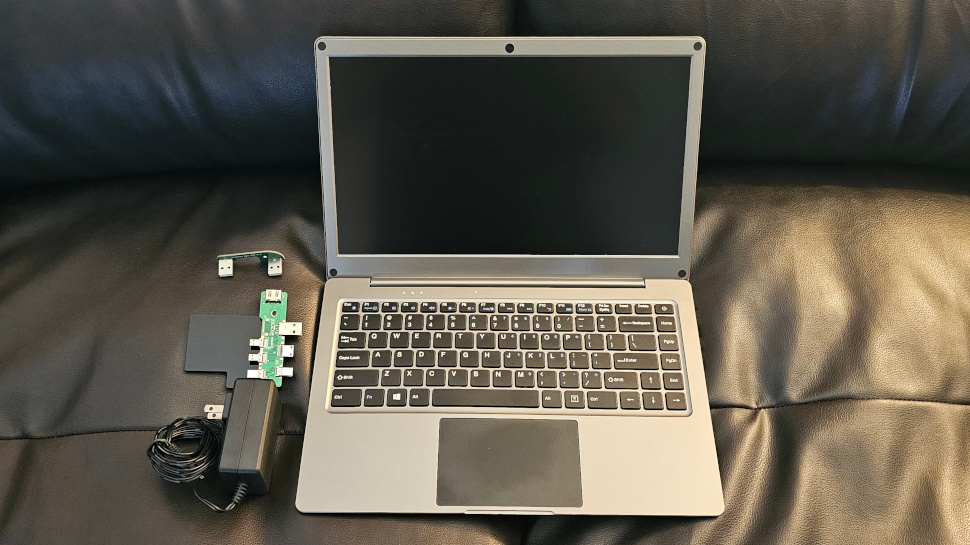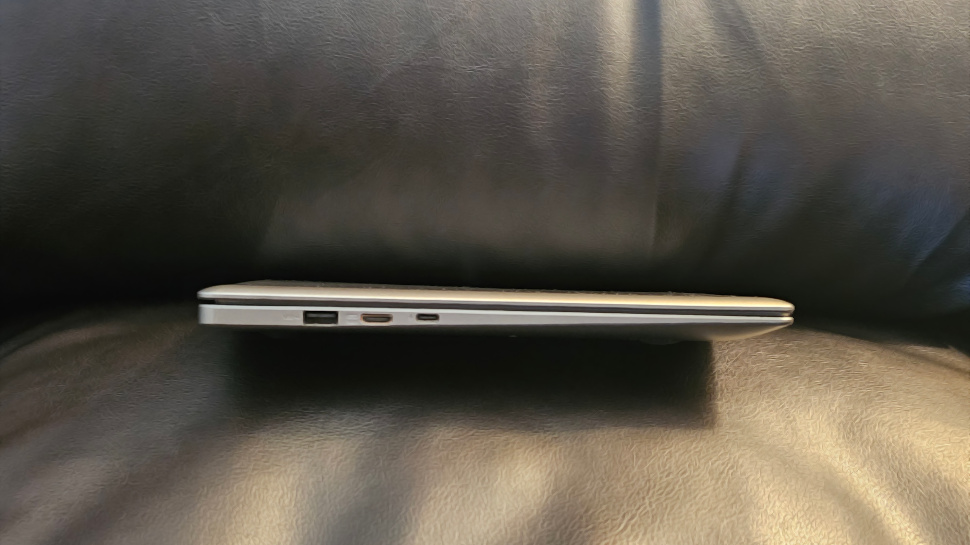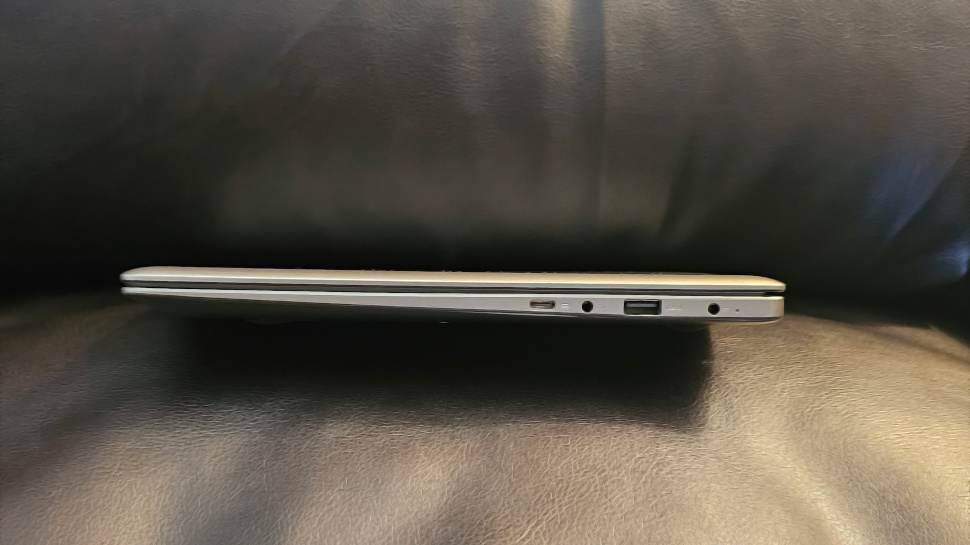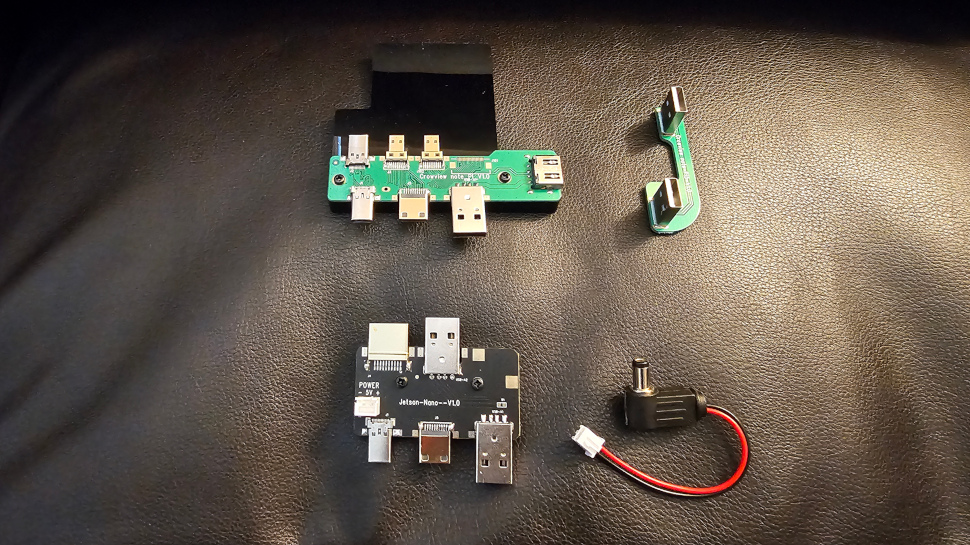CrowView Note review
Elecrow’s CrowView Note is a portable monitor that can turn a single-board computer, such as the Raspberry Pi 5, into a 14” laptop in just a few steps.
Display size: 14 inch
Panel technology: FHD IPS
Brightness: 300 nits
Power consumption: 8W when display is on, 2W when sleep
Audio power output: 2W stereo
Number of video interfaces: One mini-HDMI, one Type-C
Weight: 1.2 kg
Dimensions: 334 mm x 223 mm x 20 mm
Battery: 5AH
With its FHD IPS screen, the self-powered unit has a 5Ah LiPo battery, a touchpad, and a pair of speakers. The silver casing can be easily mistaken for premium models offered by HP or Apple, but for $169, the plastic case feels flimsy and tends to bend under keystrokes.
A KVM in disguise, the Note can connect to several display interfaces while a multifunction USB hub expands the Type-C or Type A connector to several peripherals and a spare USB Type-A socket. The 84-key keyboard has function keys for screen settings and a numeric pad shared with other keys. The supplied 48W adapter charges the battery in less than one hour and will also power devices connected through Type-C in PD mode.
Elecrow provides adapter boards that connect to popular embedded platforms such as the Raspberry Pi or the Jetson Nano.
The CrowView Note is funded through a Kickstarter campaign and will retail for $169. It is an excellent value for money, with campaign rewards for early adopters at $130.

CrowView Note: Design
The CrowView Note is thin at 20mm and lacks a fan or air vents for cooling. The grey plastic case, which can open to 180 degrees, looks solid initially. However, the drawbacks of being a plastic product become apparent once the user starts to type something on the keyboard, with each keystroke sounding hollow. The unit weighs only 1.2 kg for 334 mm x 223 mm x 20 mm and ships with a 48W 12V adapter.
The CrowView Note uses four rubber pads at the bottom to grip the work surface. Stereo speakers face downward and provide almost no bass through the plastic case. Two dual-purpose keys control the two-watt output, which should be sufficient for simple applications like watching a movie. In addition, the right side holds a 2.5 mm audio socket that allows a pair of headsets to connect to the unit.
The Note is a fancy portable screen with two display inputs: a USB-C DP supporting Alt mode and a mini HDMI connector. It also contains an innovative USB hub connecting either the Type-A host socket on the left side or the Type-C on the right. With a button press, the two can be switched between, enabling a simple KVM solution on the go. The hub drives a USB device socket, the keyboard, and the audio system.
Elecrow has used an excellent LCD panel in this product. We were impressed by the vivid color and 300 nits brightness of the 14” FHD screen. The on-screen menu requires time to get used to and will show status messages whenever a function key is pressed. A small hole beside the keypad hides a microphone. No camera is present.

CrowView Note: In use
The user has three ports on the left that provide 25W of power for an AC adapter, a mini HDMI input, and a USB device connection to the onboard peripherals. The right side offers two sockets, one for USB devices such as a USB key and a Type-C supporting 15W through PD that can connect to a smartphone. ElecCrow offers multiple PCBs that bridge the Note to embedded platforms such as the Raspberry Pi or the Jetson Nano.
The device turns on with a short press on the power button, while a long press turns it off. Charging with the 12V adapter takes about one hour, with a red LED indicating it is in progress. The unit's built-in battery offers about one hour of use with a Raspberry Pi 5. The Raspian OS does not currently read the battery level, meaning the unit will shut down without warning when the battery is depleted.
The CrowView Note's best use case is as a Keyboard-Video-Mouse adapter for two hosts. For example, an embedded platform used for development connects to the left of the display, while a smartphone used for entertainment connects to the right. In this setup, the Note performs exceptionally well, switching between the two setups by pressing the F1 key. Power isn’t lost for the two setups, even while using the battery, and a seamless USB switchover occurs.
The CrowView Note isn’t the most energy-efficient display around. While the system is off, consumption hovers around one to two Watts. When turned on, the display consumes around eight Watts. The dual-purpose function keys, which also act as system keys, take some time to get used to. Finally, no battery level is present while the Note is charging.

CrowView Note: The competition
The Dopesplay portable monitor with keyboard looks strikingly similar to the CrowView Note but only offers one USB port to connect to the host device. The lack of a second connection prevents the Dopesplay monitor from becoming a KVM. The Note is a universal platform for embedded devices and achieves this with two adapter boards, something lacking with the solution offered by Dopesplay. Finally, with an MSRP of $399, the Dopesplay unit is more than twice the price of the CrowView Note.

CrowView Note: Final verdict
The CrowView Note is one of those gadgets that becomes essential once you start using it. It packs a crisp FHD display, stereo speakers, a LiPo battery, and, above all, two USB host sockets, allowing it to become a true KVM. As a secondary display, it is light and offers a large viewing area. The multi-touch trackpad complements the compact keyboard well, while the build and material quality could be better. For $169, it will pay for itself with increased productivity away from the desk.
Buy the CrowView Note if
you constantly switch between two displays but have limited space.
Don’t buy if
you are looking for a premium product that will last for a while.
0 comments:
Post a Comment